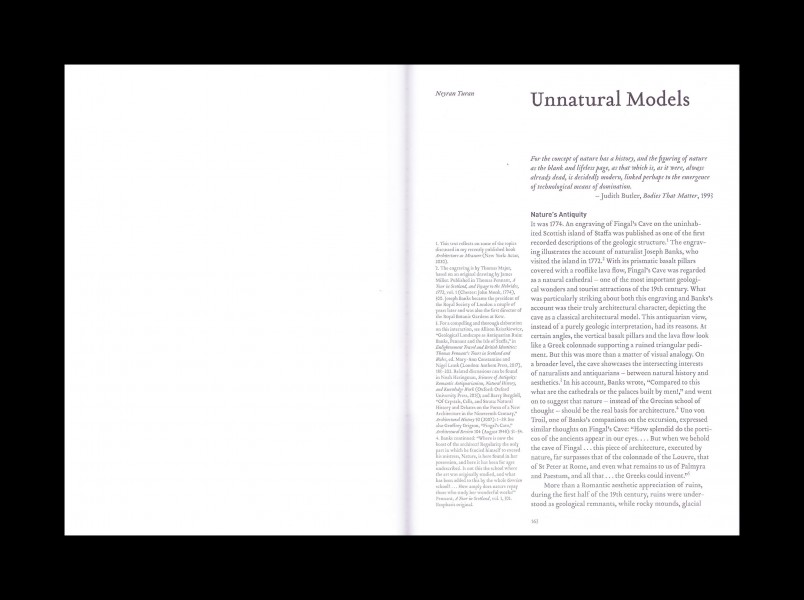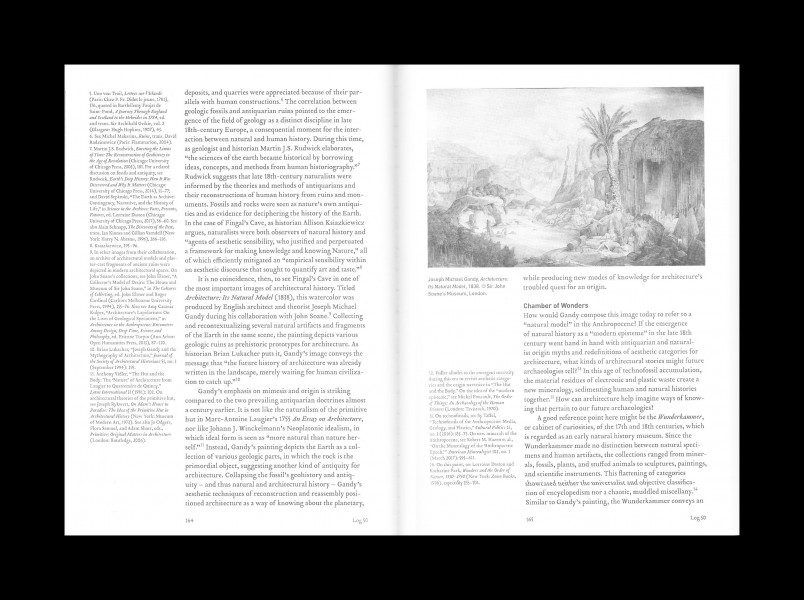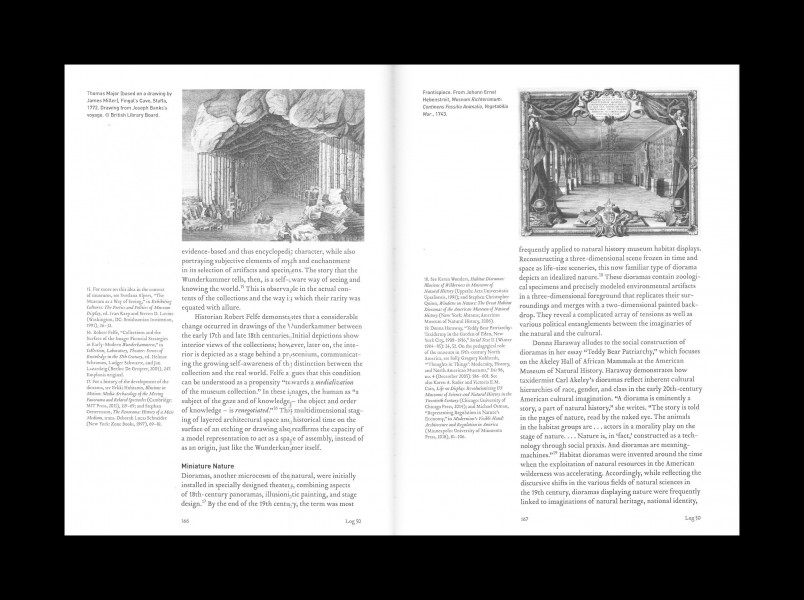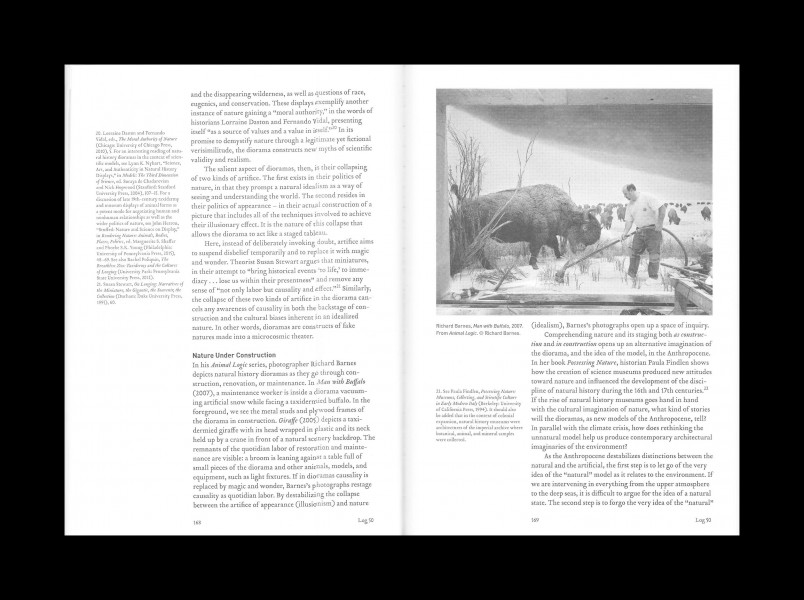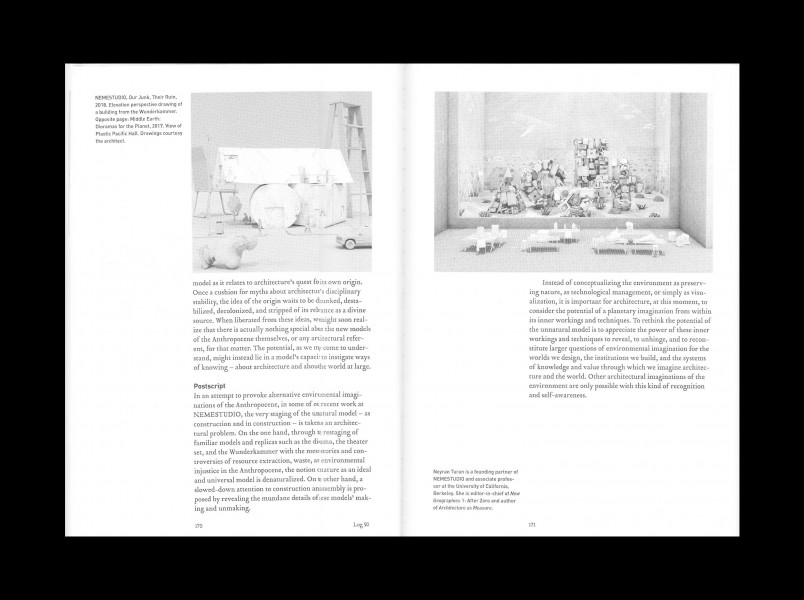As the Anthropocene destabilizes distinctions between the natural and the artificial, the first step is to let go of the very idea of the “natural” model as it relates to the environment. If we are intervening in everything from the upper atmosphere to the deep seas, it is difficult to argue for the idea of a natural state. The second step is to forgo the very idea of the “natural” model as it relates to architecture’s quest for its own origin. Once a cushion for myths about architecture’s disciplinary stability, the idea of the origin waits to be debunked, destabilized, decolonized, and stripped of its relevance as a divine source. When liberated from these ideas, we might soon realize that there is actually nothing special about the new models of the Anthropocene themselves or any architectural referent, for that matter. The potential, as we may come to understand, might instead lie in a model’s capacity to instigate ways of knowing – about architecture and about the world at large.
Instead of conceptualizing the environment as preserving nature, as technological management, or simply as visualization, it is important for architecture, at this moment, to consider the potential of a planetary imagination from within its inner workings and techniques. To rethink the potential of the unnatural model is to appreciate the power of these inner workings and techniques to reveal, to unhinge, and to reconstitute larger questions of environmental imagination for the worlds we design, the institutions we build, and the systems of knowledge and value through which we imagine architecture and the world. Other architectural imaginations of the environment are only possible with this kind of recognition and self-awareness.
